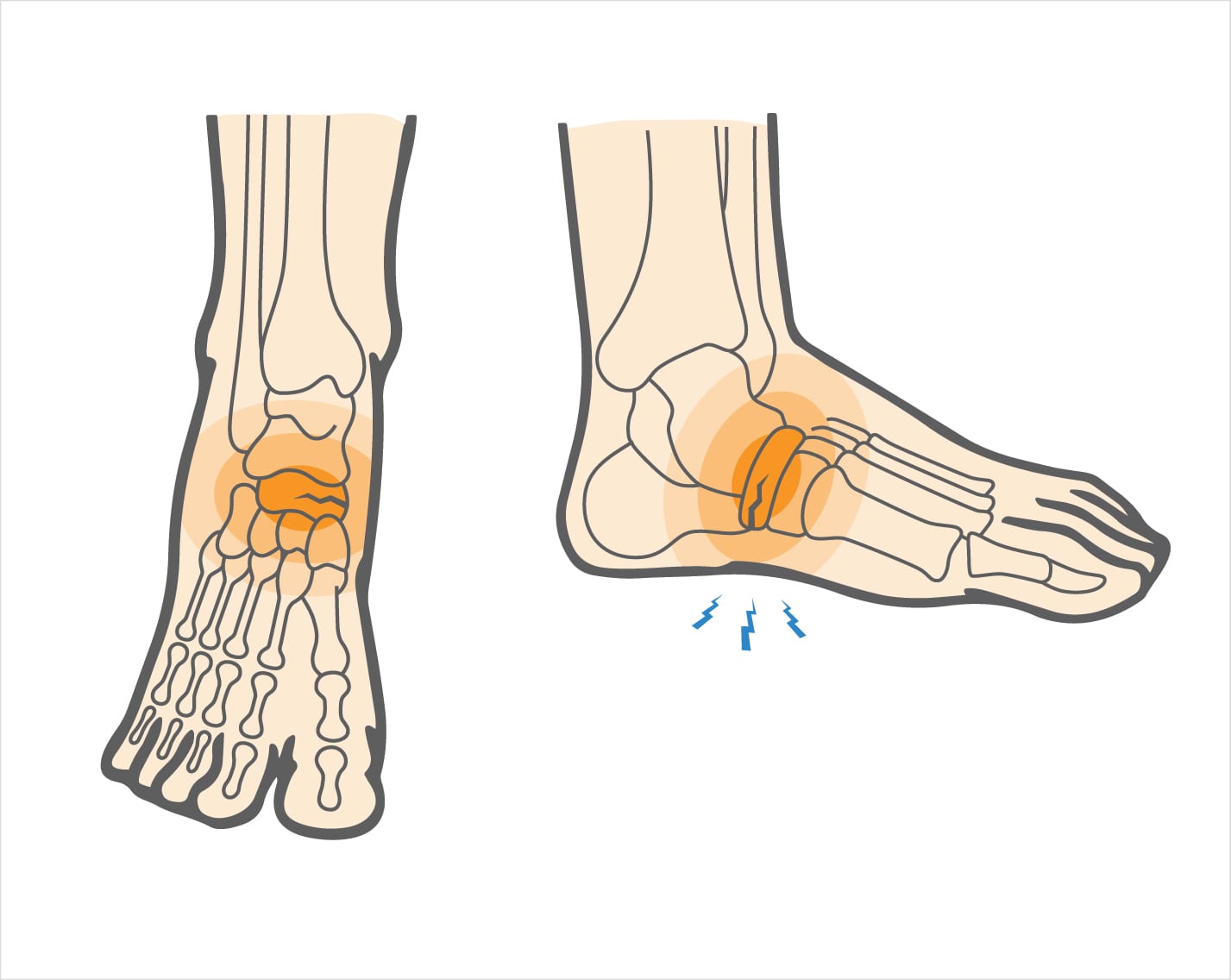The navicular is a small, boat-shaped bone located at the top of the middle part of the foot. The navicular helps connect the ankle bone to the cuneiform bones lower in the foot. A stress fracture is a tiny break in the bone that’s usually caused by overuse. The navicular can become easily fractured due to its location, where it absorbs intense pressure, particularly with athletes who play high impact sports.
Navicular Stress Fracture Causes, Symptoms & Treatment
The navicular is a small, boat-shaped bone located at the top of the middle part of the foot. The navicular helps connect the ankle bone to the cuneiform bones lower in the foot. A stress fracture is a tiny break in the bone that’s usually caused by overuse. The navicular can become easily fractured due to its location, where it absorbs intense pressure, particularly with athletes who play high impact sports.
Overview
Overview

What causes Navicular Stress Fracture?
Navicular stress fractures are often caused by repetitive stress placed on the foot. The injury usually happens to athletes who play sports that involve running, jumping, or twisting. These activities pinch the navicular between the ankle bone and the cuneiform bones. Over time, this force can cause a stress fracture. A change in sport, suddenly increasing your activity level, or low bone density can also contribute to this injury.
Navicular stress fractures are most common in these sports:
• Running
• Soccer
• Lacrosse
• Basketball
• Dancing
Symptoms
Symptoms of a navicular stress fracture usually involve a dull, aching pain in the ankle or at the middle or top of the foot. In the early stages, pain often occurs only with activity. In the later stages, pain may be constant.
Other common symptoms include:
• Swelling or bruising over the middle part of the foot
• Limping
When to see a doctor
If you have symptoms of a navicular stress fracture, you should take a break from activity that puts stress on your feet and see your doctor. Prompt treatment can prevent a stress fracture from becoming progressively worse. Your doctor will conduct a physical examination to look for signs of injury, such as swelling and bruising. He or she may press on parts of your foot to check for tenderness. X-rays are usually ordered to get an image of the fracture. More sensitive types of imaging, such as a magnetic resonance imaging (MRI) test or bone scan, may also be ordered. During your visit, be sure to tell your doctor about the sports you play and the activities that cause you pain.
Non-operative treatment
Treatment of navicular stress fractures focuses on relieving your pain and other symptoms, and allowing the fracture to heal properly. Avoiding activities that cause pain and place repeated stress on your foot to allow the healing process to take place is important. Common treatments also include:
• Applying ice and elevating your foot to reduce swelling and pain
• Using crutches if walking is painful
• Wearing a cast or special boot to support your foot
• Physical therapy after the fracture has healed
Try these exercises to help address your condition:
Below is a PDF of the Exercise Program
Surgical Treatment
Surgery is usually not needed to treat navicular stress fractures. However, surgery may be considered if conservative treatments aren’t successful in healing your fracture.
Recovery
Full recovery from a navicular stress fracture can take several weeks. Returning to play should be gradual, building up to your previous intensity levels slowly to avoid re-injuring your foot. To stay active during your rehabilitation, consider other sports that place less stress on your feet, like swimming and cycling.
GET BACK TO WHAT YOU LOVE. FASTER
Sources
https://orthoinfo.aaos.org/en/diseases–conditions/stress-fractures-of-the-foot-and-ankle/
https://my.clevelandclinic.org/health/diseases/15841-stress-fractures
https://viewmedica.com/vm/index/brochure/68/navstressfracture/en
https://www.healthline.com/human-body-maps/navicular-bone#1
https://www.sportsmedtoday.com/navicular-stress-fracture-va-159.htm

